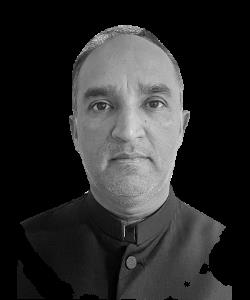
In demographic analyses, data speaks louder than words. Such studies on the Middle East are often taken with a pinch of salt due to inadequate data. Sometimes, data is too shallow or too close to call; sometimes, it even deludes us into believing in an alternate reality. Yet, when these studies surface, they tell multifarious stories, sometimes complementary, often contradictory.
The region’s rapid population growth in the last 50 years has coincided with improving living standards and growing urbanization, industrialization and consumption. However, this demographic change, characterized by the growing youth population, is also described as an economic burden rather than an asset. The population pressure presents challenges, such as water shortages, and sometimes limits growth.
Most studies narrate advantages related to the Middle East’s so-called demographic dividend, which is defined as a “favorable age structure” where working-age people proportionately exceed the dependent population. The projection range is primarily promising. However, the operational part boils down to one essential argument — what matters for a region is what you make of the demographic dividend and what you turn it into.
For instance, what is known as the “youth bulge” projects a growing working population and is good news, but it could also be a disaster if adequate opportunities are not built around it. Let us consider some public data on the Middle East’s demography. Almost a fifth of the population of the Middle East and North Africa is aged between 15 and 24 (55 percent is under 30), growing by about 2 percent a year, which is higher than the world average.
Anyone drawing inferences from such projections cannot afford to look at just one side of the story. According to the Organization for Economic Cooperation and Development, the demographic transition will present an opportunity as the region’s youth regiment grows older. It also indicates the need for renewed efforts and investments into “their transition to an autonomous life and participation in economic, social, and public life.” Almost all studies, including the OECD’s, recommend using the demographic dividend appropriately rather than just hailing it.
The criticality of this observation becomes evident in a UN Refugee Agency report, which posits that “high youth unemployment and informality rates, alongside 15 million displaced people, many of them young, do not make ideal circumstances.” Another study suggests that the Middle East is now entering a phase where working-age people make up a disproportionately large population segment, while the young and elderly are relatively small in number.
For all intents and purposes, the condition indicates a demographic dividend, as taxpaying wage earners outnumber the retired and those outside the labor market. But this is still not the complete picture. Moreover, even if that is the case, it will change if not adequately responded to.
Other determinants present a slightly different reality. A World Bank study says land is now scarce and a valuable resource across the MENA region. It emphasizes that the projected rise in land demand due to demographic trends and decreasing supply due to climatic and governance factors indicate “a looming crisis” as the region grapples with “dramatic social and political transformation.”
The ingredients must be handled carefully to make sure the end product is palatable, if not delicious.
Ehtesham Shahid
While analyzing a diverse and often turbulent region, such alarmist projections cannot be swept under the carpet. The World Bank report also suggests that land cultivation reserves in the region are almost exhausted. At the same time, the total built-up area will need to expand to accommodate the high demographic growth. Other studies conclude that demographic transformations influence power relationships, which will shift considerably in many regions, including the Middle East.
Sometimes, inferences from statistics transcend a demographic analysis. For instance, the UN forecasts that Turkiye and Iran’s populations will decline by 2100. Iraq’s population, currently 75 percent of the Gulf Cooperation Council countries combined, will be 33 percent larger than the GCC’s by the end of this century.
Population explosions in Yemen and Iraq will “presumably increase their geostrategic importance.” Yemen’s population is projected to increase from 34 million to 74 million, i.e., from being less populated than Saudi Arabia to having 50 percent more people than the Kingdom, making its populace 90 percent as large as the GCC’s combined and close to Iran’s or Turkiye’s.
Such demographic shifts might create what Jon B. Alterman of the Center for Strategic and International Studies calls “a labor transition.” It may reorder the economics, politics and society of “the entire Middle East, from Casablanca to Tehran.” Alterman cites data on startlingly high youth unemployment throughout the Middle East and the often-long wait between people ending their education and starting their first job.
“To an unusual degree, the Middle East is entering a period when people of working age are a disproportionately large part of the population, with relatively small numbers of young and elderly,” says Alterman. While those are the hallmarks of a demographic dividend, Alterman’s analysis points toward a more extensive picture where such an advantage does not bring much when organizations do not become more productive.
The demographic dividend promises to be a sumptuous dish for the Middle East; but the recipe and ingredients must be handled carefully to make sure the end product is palatable, if not delicious. In other words, the region will need to adapt its economic, social and political institutions to the changes brought about by the unprecedented numbers of young people as they move into adulthood.
• Ehtesham Shahid is an Indian editor and researcher based in the UAE.
Twitter: @e2sham
Disclaimer: Views expressed by writers in this section are their own and do not necessarily reflect Arab News" point of view












